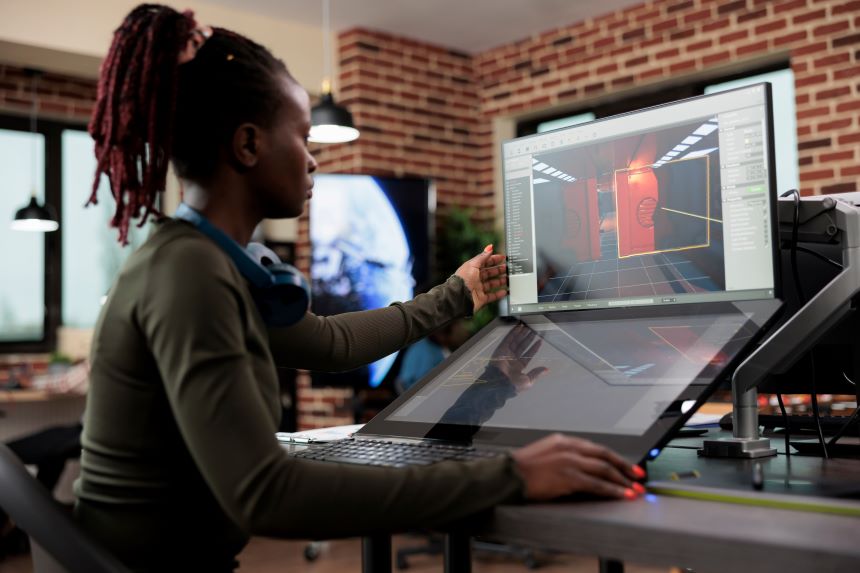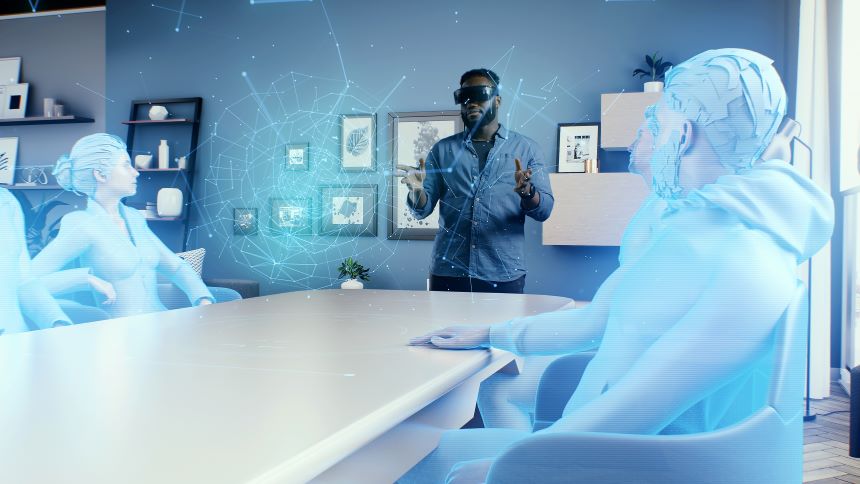
Learning and technology are joined at the hip. You can’t have one without the other.
Employers around the globe are on a journey of learning and performance transformation powered by emerging technologies like artificial intelligence (AI), machine learning (ML), virtual and augmented reality (AR/VR), and more.
As these innovations mature, they will radically reshape how employees learn critical skills, access information, collaborate with colleagues and ultimately perform at their very best.
A major opportunity lies in using AI and data to hyper-personalize employee development. With access to vast datasets around individuals’ strengths, growth areas and preferences, coupled with predictive algorithms, AI-driven systems can customize coaching, training content and recommendations optimized for every unique employee.
Rather than one-size-fits-all development programs, each worker can essentially have a personalized AI tutor tailored to help them continuously progress, unlock passion projects or pursue skill-building aligned to the organization’s most urgent needs.
EI Powered by MPS, a Brandon Hall Group™ Smartchoice® Preferred Provider, has broad expertise in leveraging technology to design and deliver any learning experience an organization may need to meet evolving and urgent business goals. You can learn more about EI’s thought leadership and capabilities here.
Addressing the Complexities
Many organizations need help because of the complexity of building a learning technology ecosystem aligned with learning and business strategies while managing L&D budgets that are mostly flat or with only small increases year to year. That leaves many employers failing to realize the potential that advanced technologies can deliver.
For example, while AR/VR already has impressive capabilities, only 11% of organizations surveyed by Brandon Hall Group™ will add AR/VR platforms over the next 12 months and only 10% will add learning analytics tools. However, both will become indispensable in creating high-impact learning experiences in the years ahead.
To build a technology ecosystem to meet future learning and performance demands, L&D teams must devote time and effort to learning about existing and emerging learning technologies. They must devise learning and knowledge management strategies to ensure the ecosystem is targeted at meeting organizational learning and performance needs — not just for today but for years to come. For many organizations, this requires external help from experts.
Each potential platform should be evaluated from a use-case perspective that demonstrates how can meet those needs and whether it can be integrated seamlessly into the existing ecosystem. Selection of learning technology is a tremendous opportunity for the learning function to work closely with other parts of the enterprise, from IT and Operations to Finance and the C-Suite. If L&D links the technology acquisition approach to specific business objectives and use cases, it will demonstrate the alignment with the business that many learning leaders say already exists but others across the organization do not believe is true.
Future-Proofing Your Learning
The key to success is building the right learning strategies for your organization and matching them to the technologies that can deliver on those strategies. Technology can improve learning experiences and impact individual and organizational performance in so many ways that it becomes difficult to prioritize what to do, let alone how to do it. Here are several ways that the right technologies can help improve and future-proof your learning:
- Empower learners to take ownership of their learning. Leaders must communicate the importance of learning and what’s in it for the employee. The technology makes it easier for them to do so.
- Provide immersive learning experiences. A range of platforms — from an LMS to coaching platforms and a host of AI-driven solutions — provide experiential learning, evaluate performance in the learning and offer recommendations for further training.
- Identify gaps. If you have the tools to gather data and use predictive analysis, you can identify learning and performance gaps and proactively address them.
- Increase motivation and engagement. Through the use of gaming elements in small and focused ways, you can improve learner motivation and increase the likelihood of recall. Elements — such as short quizzes, leaderboards to track employee progress, and providing badges and points when employees reach learning milestones — are simple to implement (with the right technology) and can reap huge benefits.
- Increase learning automation. Through the use of AI and ML, organizations can remove manual inefficiencies and customize learning ecosystems to optimize skills development across the corporate workforce. AI and ML can create personalized learning recommendations, adaptive learning pathways, automate assessments and, by analyzing multiple employee data sources, forecast future demands. This removes a significant burden from over-taxed L&D teams and allows them to assume more “human-centric” responsibilities.
- Efficiently address different learning preferences. The use of video-based learning is highly engaging for modern learners while delivering consistent, cost-effective, scalable training that can be tracked for effectiveness. Short videos engage visual and auditory learners with stimulating content and deliver information in a more focused, digestible format.
- Scale coaching. In almost every study that Brandon Hall Group™ conducts, coaching is cited as important and effective. It can be great on its own or as a modality within a variety of learning initiatives. The challenge in socializing coaching is that it is not scalable without technology. Virtual coaching platforms allow easy deployment of coaching initiatives across global workforces and enable coaching relationships that aren’t limited by geography. Employees can access coaching sessions online without taking time to travel. Coaching technology can also provide analytics on coaching interactions to deliver insights that optimize and tailor coaching programs.
Reaping the Business Benefits
As today’s rapidly evolving business landscape requires continuous skills development, companies that utilize learning technologies give their workforces a strategic advantage. By harnessing data analytics, AI, VR simulations and online platforms, corporations can deliver more adaptive, engaging and accessible training across dispersed global teams.
This is not an easy lift for many organizations, which is why external expertise is important. For more details and analysis on the business benefits of leveraging existing and emerging learning technologies, I recommend this eBook by EI Powered by MPS.
Key benefits range from the ability to customize content based on individual employee needs to optimizing training budgets via scalable digital solutions. Additionally, the instantaneous feedback and standardized insights enabled by learning tech allow for precise measurement of program effectiveness. With such data, companies can refine development initiatives to directly address skills gaps and drive productivity gains.
Ultimately, digitally transforming corporate learning translates to improved learner outcomes in terms of engagement, knowledge retention and on-the-job application. It also elevates businesses’ capacity to develop talent quickly and align competencies with evolving demands. As both a support for employees and a value driver for organizations, leaning heavily into learning technology earns a considerable competitive edge for enterprises today and prepares workforces to excel in the future.
– Claude Werder, Senior VP and Principal Analyst, Brandon Hall Group™



